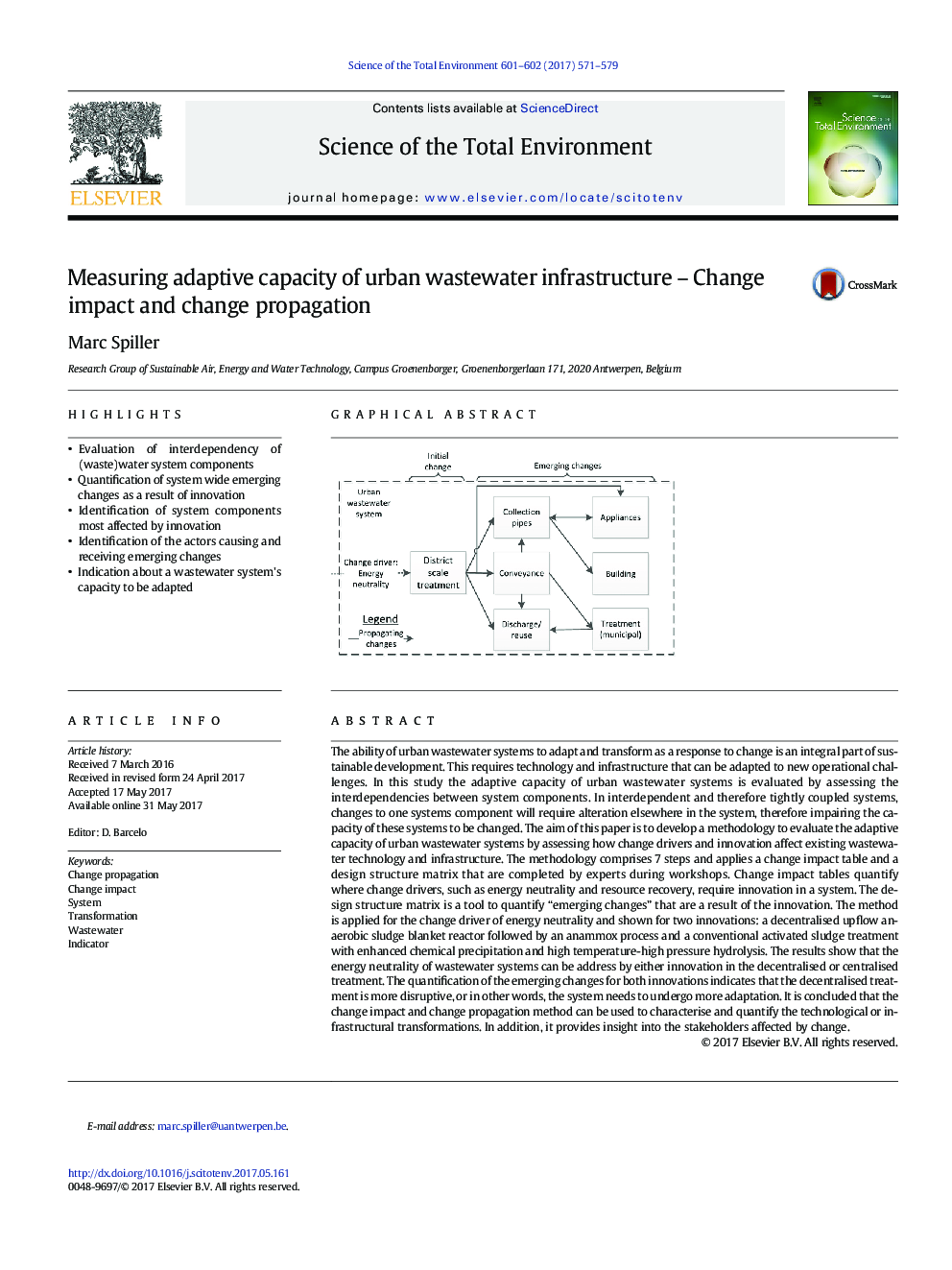| Article ID | Journal | Published Year | Pages | File Type |
|---|---|---|---|---|
| 5750414 | Science of The Total Environment | 2017 | 9 Pages |
â¢Evaluation of interdependency of (waste)water system componentsâ¢Quantification of system wide emerging changes as a result of innovationâ¢Identification of system components most affected by innovationâ¢Identification of the actors causing and receiving emerging changesâ¢Indication about a wastewater system's capacity to be adapted
The ability of urban wastewater systems to adapt and transform as a response to change is an integral part of sustainable development. This requires technology and infrastructure that can be adapted to new operational challenges. In this study the adaptive capacity of urban wastewater systems is evaluated by assessing the interdependencies between system components. In interdependent and therefore tightly coupled systems, changes to one systems component will require alteration elsewhere in the system, therefore impairing the capacity of these systems to be changed. The aim of this paper is to develop a methodology to evaluate the adaptive capacity of urban wastewater systems by assessing how change drivers and innovation affect existing wastewater technology and infrastructure. The methodology comprises 7 steps and applies a change impact table and a design structure matrix that are completed by experts during workshops. Change impact tables quantify where change drivers, such as energy neutrality and resource recovery, require innovation in a system. The design structure matrix is a tool to quantify “emerging changes” that are a result of the innovation. The method is applied for the change driver of energy neutrality and shown for two innovations: a decentralised upflow anaerobic sludge blanket reactor followed by an anammox process and a conventional activated sludge treatment with enhanced chemical precipitation and high temperature-high pressure hydrolysis. The results show that the energy neutrality of wastewater systems can be address by either innovation in the decentralised or centralised treatment. The quantification of the emerging changes for both innovations indicates that the decentralised treatment is more disruptive, or in other words, the system needs to undergo more adaptation. It is concluded that the change impact and change propagation method can be used to characterise and quantify the technological or infrastructural transformations. In addition, it provides insight into the stakeholders affected by change.
Graphical abstractDownload high-res image (131KB)Download full-size image
